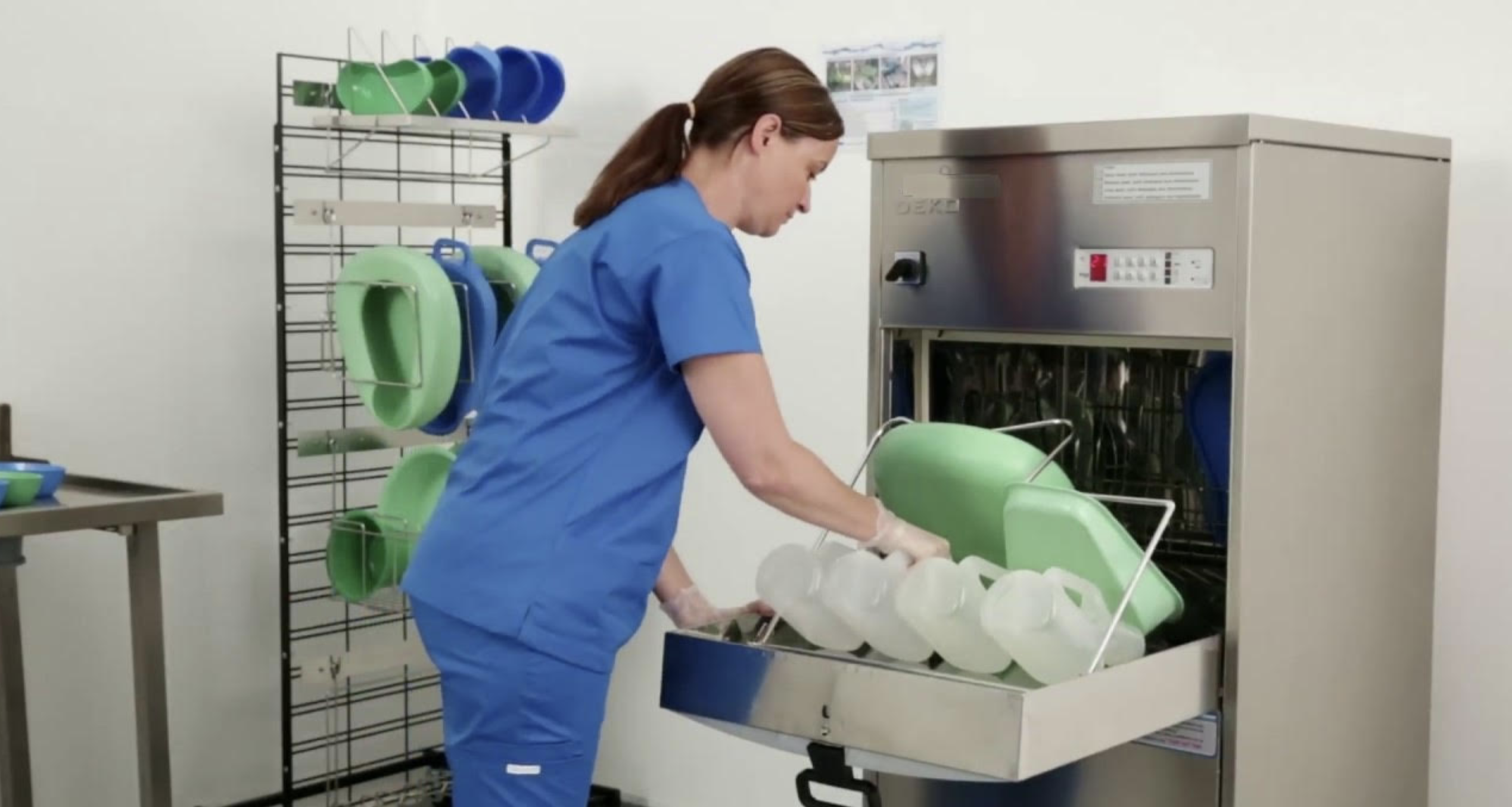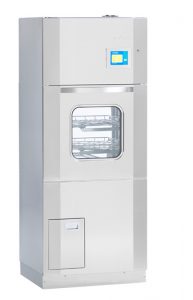The design of a sluice room is crucial. If it is poorly designed, there is a chance that the disposal of human waste may be slow, meaning there is more risk of spreading harmful bacteria.
The design of a sluice room

The route clinicians take around the sluice room should also be considered. You don’t want people criss crossing across the room, so try and plan a circular route. This also prevents any stage of the cleaning process from being missed.
Think about lighting and ventilation as well. Ventilation is needed to avoid any unpleasant odours from escaping the sluice room. Fluorescent lighting should be screened and also on a sensor, so light switches are not required.
 What equipment is needed?
What equipment is needed?
Washer Disinfector
When you use reusable bedpans, urine bottles and commode pots, a washer disinfector must be used to clean them. Manual washing is unsafe and unreliable. A washer disinfector will ensure that all reusable items are cleaned and disinfected, making them safe to be used with a different patient.
Hands-free clinical waste bin
Hands can spread bacteria, so if you can, choose hands-free options for all items. A bin with a foot pedal provides a safe way to dispose of things that may carry bacteria, such as gloves and aprons.
Stainless steel sink
Choose stainless steel because it’s easy to clean and hard-wearing. It’s the safest material to use when you’re trying to avoid an infection breakout. Also, make sure the sink is deep. You’ll be using it for everyday washing and rinsing. You want to avoid splashing surfaces, other equipment or the clinicians themselves.
Work surfaces
Again work surfaces should be made of stainless steel because it doesn’t oxidise and can be cleaned properly.
Liquid soap dispensers
Help make handwashing a regular occurrence in the sluice room. Having soap readily available makes hand washing easier and minimises the potential spread of harmful microorganisms.
Separate hand washing sink
This basin will be separate from the deep sink and should be situated close to the door. It should be made from stainless steel and is there to ensure staff wash their hands before and after dirty tasks and when they enter and leave the room.
Paper towel dispenser
Make sure hands are dried properly with paper towels. Have a pedal bin close by so paper towels can be disposed of correctly with other non-hazardous waste.
Wall-mounted rack
This rack is where you can put reusable utensils to dry. It will also make sure they remain clean, and the sluice room stays tidy.
Why are sluice rooms so important?
Infection outbreaks are a real threat in hospitals and other health care settings. Without stringent infection control procedures, staff, patients, and visitors are being put at risk.
Sluice rooms deal with human waste, which can carry harmful bacteria. Therefore it needs to be disposed of properly.
 We can help
We can help
If you are planning a new sluice room or need to update an existing one, Dekomed can help.
We have a wide range of washer disinfectors that will help ensure that infection outbreaks are reduced.
We carry out on-site checks to ensure the washer disinfector will fit in the desired space. We can also provide CAD drawings to see how the machine will look in the room before you commit to buying. As well as a pre-fitting service, we will provide advice so you can select the right device for your setting, and we will also install the machine for you.
But that’s not it.
We provide an after-care service to ensure your washer disinfector is working properly. If there are any problems, we have fully-trained engineers on hand to make quick repairs.
To find out more, get in touch. We’re always here to help.
Tel: +44 (0)161 483 7333
Email: deko@dekomed.co.uk
